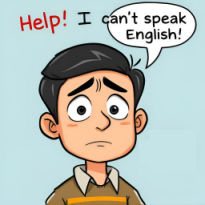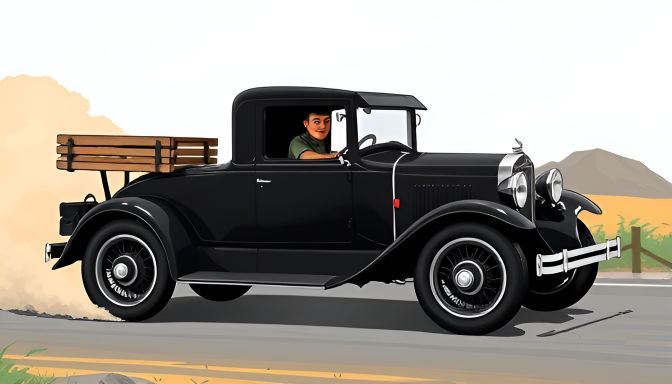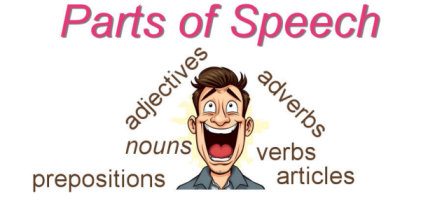



Don't be scared. The Wizard of Eng is here to help you.

You already know some English words. In the image above you see a car, right?
Car is an object (or thing). Every object has properties
(or parts). For example, this particular car has wheels and a driver.
What other parts does this car have? Can you name them?
These parts are called nouns in English.
Our car not only has parts, but also functions (actions). For example, our car can move. It can also stop.
Let's look at two other objects that have parts and actions, MAN and DOG. We can use nouns to introduce the parts and verbs for the actions. How are MAN and DOG the same? How are they different?


For example, you can say, "Both the man and the dog have two eyes." You can also say, "Both the man and the dog can see."
Until now, we have seen how we use nouns and verbs in sentences. However, there are other "parts of speech" in English. Look at the illustration below. Besides nouns and verbs, English has adjectives, adverbs, articles and prepositions.

Adjectives modify (describe) nouns and adverbs modify verbs. For example, we can say, "The driver is driving a black car. In this sentence, the adjective black describes the noun car. We can also say, "The driver drives quickly. Here the adverb quickly modifies the verb drives.
Read the following sentence. The black car is on a road.
Can you find the articles and the preposition?
 Check-Up: Nouns & Verbs
Check-Up: Nouns & Verbs1) The dog runs quickly.
2) She eats an apple for lunch.
3) John drives to work.
4) Marcio speaks Portuguese.
5) Sharon is our teacher.
6) Alexander asks good questions.
7) The restroom is down the hall.
8) It often rains in Oregon.
9) Len almost never eats donuts.
10) Come to class on time, please.
Listen and Respond
Listen carefully. Then, listen again and identify the parts of speech in the audio. For example, you will hear the word "Sharon". Say, "Sharon is a noun."
Read, Speak and Respond
Directions: Read the following passage. Then, ask a classmate to
answer a question about the passage. There are questions below, but
you can make your own questions.
In our classroom there are ten chairs. Each chair has a desk. The
teacher also has a nice chair and a desk. The chair is black and
the desk is brown. There are many things on our teacher's desk.
For example, there are two textbooks. There is also a container with
red, black, blue and green markers. Some markers work, some do not.
The red marker is completely dry. There is also a laptop computer on
the desk. The laptop is connected to a large monitor on the wall.
In the classroom, you can see a large whiteboard. Sometimes, there
is writing on the whiteboard. There are windows in the classroom,
but we usually keep them closed because we have air conditioning.
There is one door for the classroom. When class begins, we close
the door.
1. How many chairs are there in the classroom?
2. What color is the teacher's chair and desk?
3. Which marker doesn't work?
4. What is connected to the laptop?
5. Why are the windows closed?
6. What happens when class begins?


KatieCat and Bluto live on Silver Road in Palos Verdes. In fact, they're neighbors. As you can see from their portraits, KatieCat is a lovely Persian cat and Bluto is...well, he is a romantic English bulldog. Bluto is madly in love with KatieCat. KatieCat, however, is not just the girl next door, she is also the most popular cat in the neighborhood with all the boy cats. All the boys call KatieCat the cat's meow. Bluto, always the romantic, tries hard to win KatieCat's heart. He often brings meaty dog bones from his owner's kitchen and flowers from the garden to KatieCat. However, KatieCat never responds. She probably thinks that Bluto is just not her type. Bluto is so sad.
1. What must Bluto do to win KatieCat's heart?
2. Which properties do both cats and dogs have?
3. What can dogs do that cats can't do?
4. What can cats do that dogs can't do?
5. Is it better to be a cat or a dog?
6. Is it better for you to be KatieCat or Bluto?

